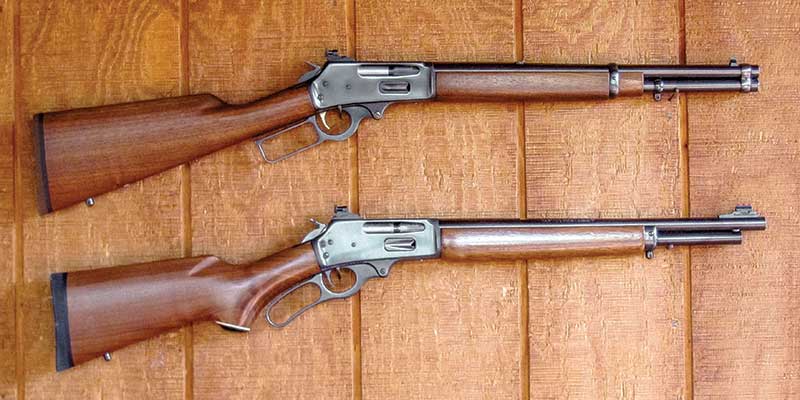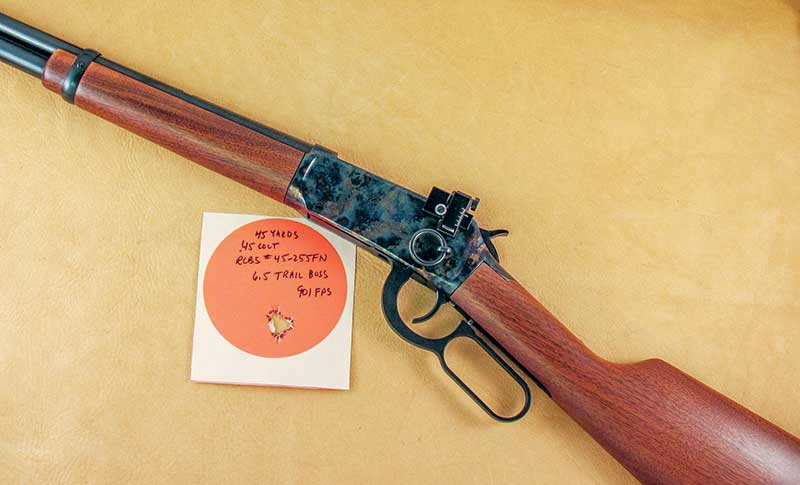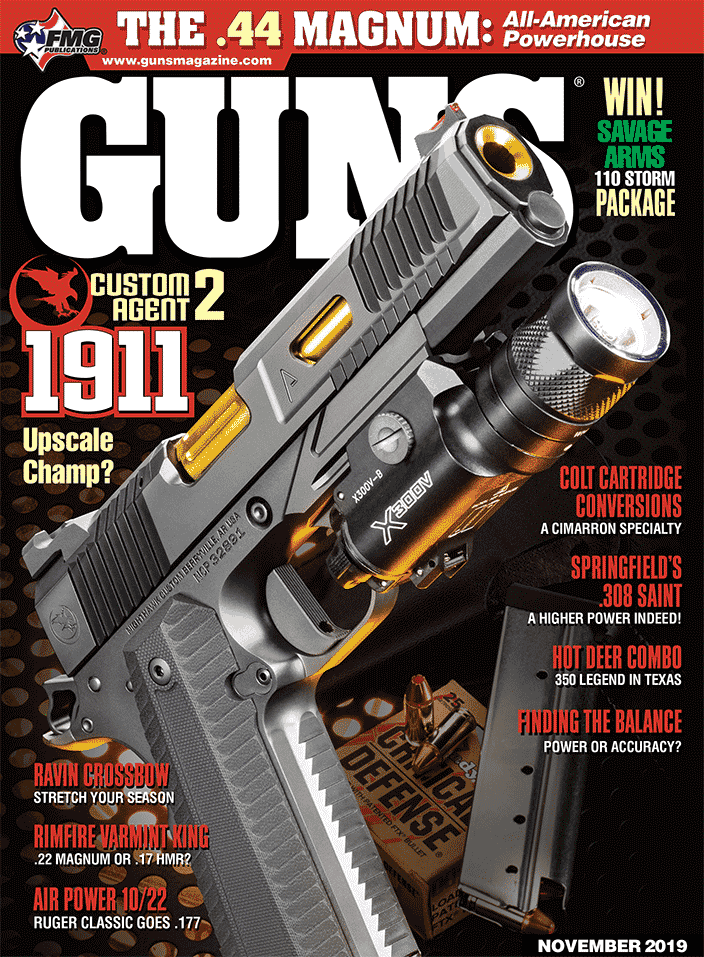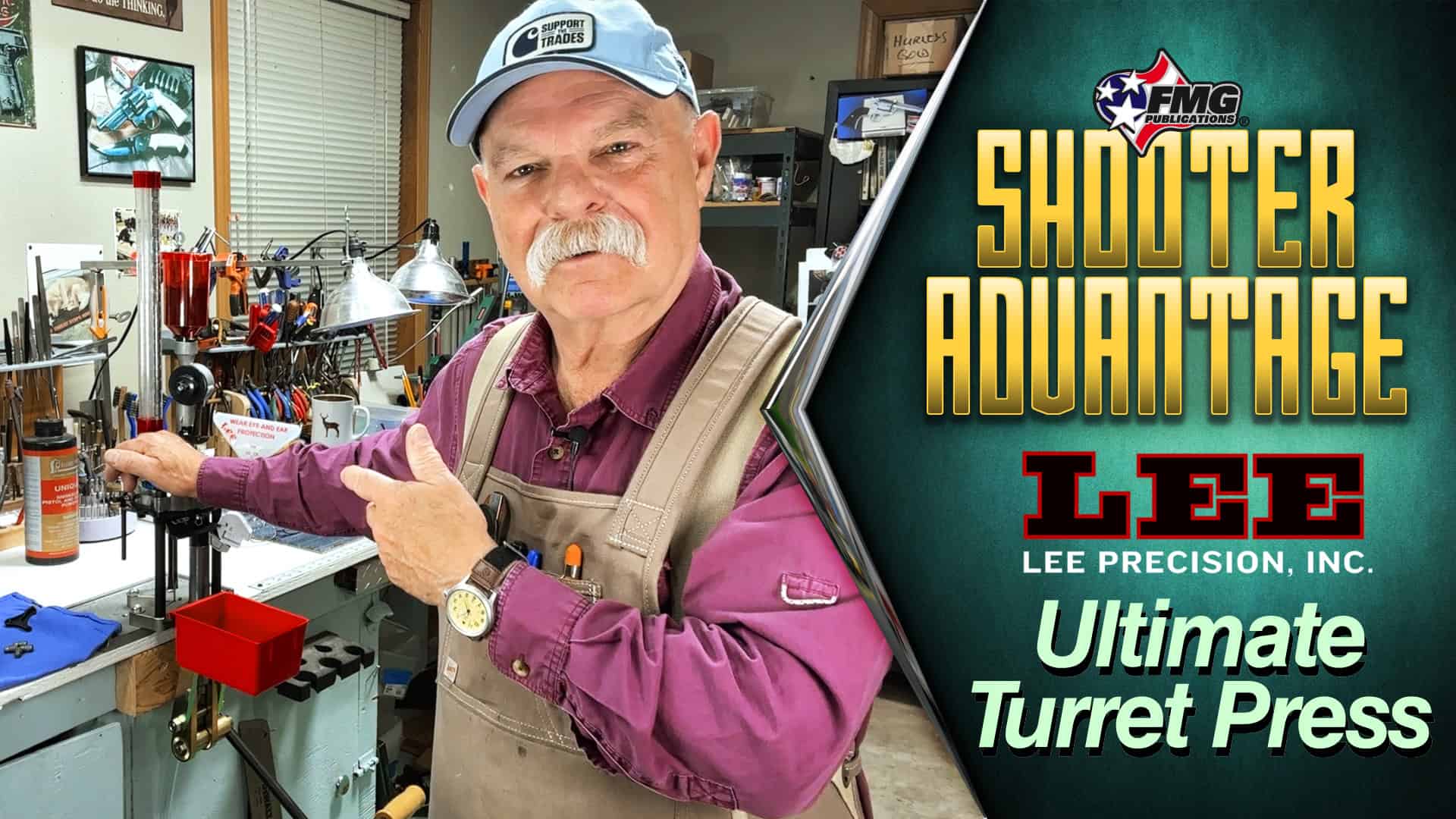Trail-Bossin’ Trappers
Pack A Light Lunch In Your Levergun
Even though I’m stuck here in the second decade of the 21st century, my shooting soul still goes back to the couple decades before and after the turn of the 20th Century. I still think single-action sixguns and early S&W Hand Ejectors are state-of-the-art, and there isn’t an AR ever made which can come close to stirring my spirit like a good lever-action — or as I prefer to call them, leverguns.
Turning To Trappers
I have several leverguns with barrel lengths of 24″ and even 26″, and they are fine for easy shooting but not so good for easy packing. A pair of brass-framed 1866 Winchester replicas with long octagon barrels got very little use until I got rid of some extra metal and turned them into “Trappers.”
There was a time when both Marlin and Winchester offered virtually any barrel length the customer would like. Just think how handy a .357 Magnum levergun with a 12″ barrel would prove, besides exceptionally easy shooting. The same length on a levergun chambered in .44 Magnum would be quite practical for use in tight quarters — whether hunting deer or feral pigs. Alas, in this day and age, they’re not to be.
Just about the time I was ready to enter this world, the U.S. Congress mandated minimum barrel lengths for rifles and shotguns. By the time I reached the age of being able to purchase a rifle, Trappers could no longer be made with 14″ or 15″ barrels. The first modern short-barreled levergun I can remember seeing (and lusting after), was the Marlin Model 336 Marauder with a 16-1/4″ barrel chambered in either .30-30 or .35 Remington. This rifle was only produced for one year in 1963, a time I was married with three young pre-schoolers and attending college full time; there was very little expendable money — certainly no excess cash for a levergun.
Takin’ It Easy
After I had an artery in my chest split six years ago, I immediately began backing off heavy-recoiling rifles. No more heavy-load .45-70s, I sold my .338 Winchester and .375 H&H and decided if I was going to shoot rifles a lot, I’d need some very mild loads.
I thought back to several years ago while hunting whitetails on the Penn Baggett Ranch outside of Ozona, Texas. My guide shared his load for jackrabbits and other varmints — a 170-gr. hard-cast gas-checked bullet over 6.5 grains of Red Dot in his lever-action .30-30. He allowed me to shoot his rifle and I found it both accurate and pleasurable to shoot. I didn’t immediately tap into this information, but filed it away in the back of my mind for future use.
While pondering light loads, the information from the guide surfaced again and I put some loads together for use in my Marlin 336 Trapper. The results were quite satisfying with the RCBS #30-180FNGC clocking out at 1,074 fps with three shots in 1-3/8″ at 45 yards with nary a kick in a carload. Oregon Trails 170-gr. FNGC was a little faster at 1,116 fps with a little tighter group of 1-1/8″. For a little more velocity (but considerably still under factory loads), I found 20.0 grains of XMP5744 under a 170-gr. FNGC provided 1,700 fps and excellent accuracy of 3/4″ for three shots at 45 yards.
However, there are several problems involved in trying to come up with lighter loads, especially in such large cartridge cases as the .45 Colt and .44-40, both of which were designed to hold 40 grains of black powder. When you try to develop lighter loads in these cases, very little capacity is taken up with the powder, resulting in a lot of airspace. When the cartridge is fired, the powder is not sitting on top of the primer as it does with a full load of black powder, but rather is lying along the bottom side of the case parallel to the ground and the flash of the primer goes over the powder rather than under it.
A second problem inherent in developing lighter loads with conventional powders is a chance of a double charge. All it takes is some distraction and an unnoticed double charge drops into a large case. That’s why I don’t want anyone in my loading room except me when I’m putting loads together.
The Boss Steps In
HodgdonPowders solved both of these problems about 10 years ago with the introduction of Trail Boss, a powder designed specifically for low velocity lead bullet loads for practice, plinking and Cowboy Action Shooting. Trail Boss is unlike any other powder on the market today in several ways. It is so light a 5-lb. keg of IMR Trail Boss is larger than an 8-lb. keg of IMR4227. It also flows so easily you need to learn not to “overshoot” when transferring powder from the keg to the measure.
I’ve used Trail Boss in virtually every sixgun cartridge with very pleasing results and decided to try a different application for it in Trapper-length leverguns.
Using 10.0 grains of Trail Boss grains under the Oregon Trail 170FNGC resulted in 1,250 fps and a 1-1/2″ group at 45 yards meaning it has enough energy and accuracy for small game, varmints, even turkeys where allowed, doing it with very mild recoil. I also took the time to try Trail Boss in some of the larger rifle cartridges such as the .375 of Winchester and the .38-55 Winchester. The .30-30 is nothing more than the .38-55 necked down, while the .375 Winchester is a slightly shorter .38-55.
My .38-55 Trapper is a Winchester Model 94 while my .375 Trapper is a Marlin Model 336. Both of these had longer barrels that I had cut back to 16-1/4″. In the .38-55, 9.0 grains of Trail Boss under the Oregon Trail 240 FP results in a muzzle velocity of 1,030 fps and a three-shot 45-yard group of 1-1/2″ while 16.5 grains of XMP5744 under the Lyman 250GC and loaded in .375 Winchester brass clocks out at 1,133 fps with an excellent group of 3/4″. This means it’s accurate enough for head-shooting small game and turkeys with no meat wasted. This same load in my Marlin .375 Trapper provides almost identical results with a muzzle velocity of 1,117 fps and a group of 1″.
At one time Winchester (then known as United States Repeating Arms Co.), offered Model 94 Trappers, I believe this was in the 1980s, chambered in .30-30, .45 Colt, .44 Magnum and .357 Magnum. They are such handy little rifles and — since I hate making major decisions — over a period of time I bought all of them. The USRAC Winchester .45 Colt Trapper gives the tightest groups of all of my Trappers using the RCBS #45-255FN over 6.5 grains of Trail Boss for an exceptionally mild-shooting 900 fps and an incredible group of 3/8″ for three shots at 45 yards.
With the same load, the Marlin .45 Colt Trapper is more than adequate with a group of 1-1/2″, however, it pales in comparison to what the Winchester .45 can do. Switching to the .44 Magnum, the Marlin with 240-gr. hardcast bullets over 6.7 grains of Trail Boss clocks between 950-980 fps with two different bullets and averages 1-1/2″ while the Winchester .44 Magnum is not even close to being in the same league as the .45 Colt version with groups from 2-1/4″ to 3″. Who says the .45 Colt is obsolete?
All of these loads in all of these guns are not only excellent choices for varmints and small game, they are perfect for introducing young shooters — giving them a “big rifle feel” with “small rifle recoil.”







